After A Year of Answering Bread Questions, My Best Advice for Bread Bakers
This post may contain affiliate links. Please read my disclosure policy.
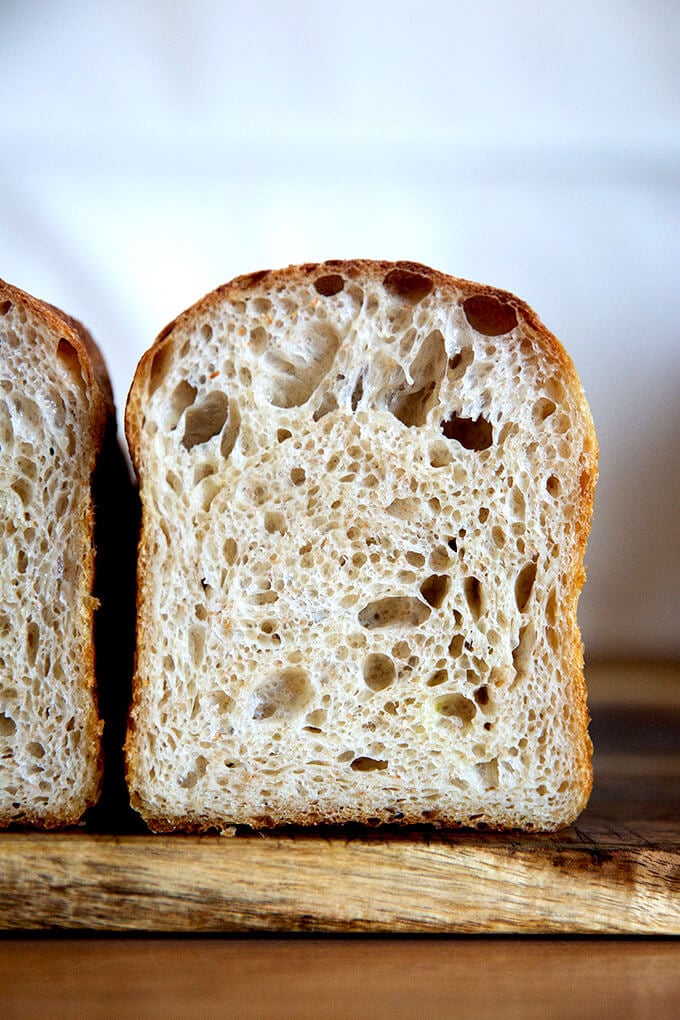
About a year ago to the day, the whole world began baking bread. And as the loaves emerged, the questions followed.
In all of my years of blogging, I have never answered more questions on a single subject. And while I couldn’t always get to the bottom of why a loaf of bread didn’t turn out as expected, these various exchanges always taught me something, helped me better understand the technical aspects of the bread baking process.
Answering these questions also confirmed:
- Bread still hasn’t shaken its high-maintenance reputation. The fact that it took being locked up at home for so many people to give bread baking a go, shows that this misconception persists: bread baking requires a lot of time and attention, requires being confined for hours on end to pull off successfully.
- Baking bread continues to fill people with a sense of joy and accomplishment. Pulling a loaf of freshly baked bread out of the oven never fails to inspire wonder. Bakers derive as much happiness from baking a loaf of bread as giving one away.
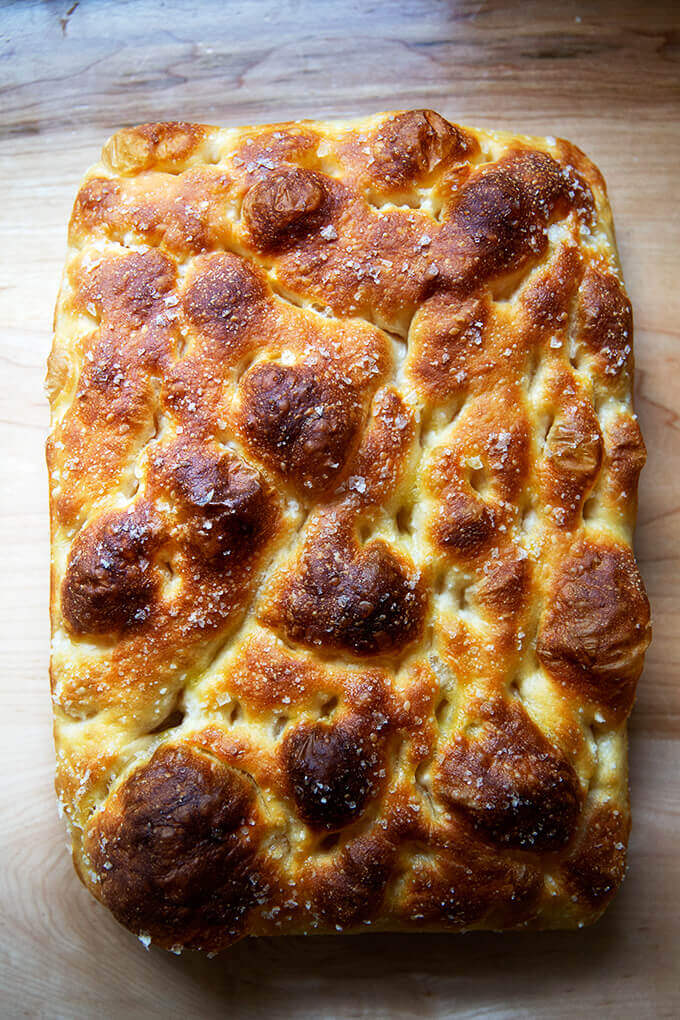
To help position bread-baking as a less needy undertaking — a constant goal of mine — and to encourage people to bake on even as the world opens up, I thought I’d share are some of the tips and ideas I’ve found myself reiterating time and again this past year.
10 Tips for Bread Bakers
- The refrigerator is your best friend. The biggest tip I have for the many people who still feel they can’t work bread-baking into their very busy schedules is to use the fridge. At any point of the bread-baking process — after you mix the dough, after it’s made one rise, after it’s made two rises, after it’s been shaped and transferred to its baking vessel — bread dough can be transferred to the fridge, and it can hang out there for a long time (days even, depending on the dough). Note: Dough should be stored in an airtight container in the fridge to ensure a crust does not form on the dough.
- A scale continues to be essential. I once only felt strongly about using a scale for flour and other dry ingredients, but I now encourage bakers to weigh everything — the flour, salt, liquids, etc. Using a scale ensures you are following a recipe precisely. It also allows you to troubleshoot and make adjustments in a meaningful way.
- A big part of making a good loaf of bread comes down simply to using the right amount of salt given the amount of flour you are using by weight. It’s like anything: bread has to be well seasoned. At a minimum, use 10 grams of salt for every 500 grams of flour. (I like to use more.)
- A big part of making good bread comes down simply to using the right amount of water given the amount of flour you are using by weight. Depending on the flour you are using and your environment, and depending on the type of bread you are making, the appropriate amount of water will vary. And it may take some trial and error to get right. A scale will make the trial and error process go more quickly.
- If you get #3 and #4 right, you’re 80% of the way to making a great loaf of bread.
- Be nimble: there is no foolproof bread recipe. Try as I might over the years to make bread baking as foolproof as possible, I’m realizing it’s a lost cause. What works for me in my environment, might not work for you, even if we are using the exact same brands of ingredients and the exact same measurements. Moreover, what works for me perfectly one month, may not work perfectly the next. As the seasons change, flours change, environments change. You have to go into bread baking with a willingness to make adjustments even to the recipes you are closest with. A scale makes adjusting easy. I am constantly tweaking my bread recipes, changing ratios, playing with different methods, and I encourage others to do the same.
- Focaccia, yeast-leavened or sourdough, is the best bread recipe for beginners, for a few reasons, namely: it requires no special equipment, it requires no tricky shaping technique, it requires no scoring. With focaccia, if you have a 9×13-inch baking pan and your finger tips (for dimpling), you’re good to go.
- Sourdough can be simple and delicious and made without an autolyse or preferment or levain. My biggest tips for having success with sourdough include:
- It starts with your starter. Be sure it is strong and active before mixing a loaf of dough.
- Use a straight-sided vessel to ensure your dough does not over ferment during the bulk fermentation. Stop the bulk fermentation when your dough has increased in volume by 50-75% (as opposed to when it doubles).
- Cold proof for at least 24 hours before baking.
- Stop buying commercial whole wheat flour. If nutrition is the goal, there is little point in using commercial whole wheat flour. To truly add a boost of nutrition to your breads, use stone-milled flours. (Read more about stone-milled flour here.) Keep in mind, the more stone-milled flour you use in your breads, the less light and airy the crumb will be. Keep in mind, too, a little stone-milled flour goes a long way in terms of imparting flavor, color, and aroma.
- A simple trick for getting a more open crumb? It’s all in the shaping. Instead of shaping a round, shape a batard. I have no idea why this works, but it does. Watch the video below:
Friends what have you learned about bread baking this year? I’d love to hear your biggest revelations or tips or advice for other bread bakers.
PS: Why is My Sourdough So Sticky? 4 Common Sourdough Mistakes
PPS: Find all of my favorite bread recipes right here → Favorite Bread Recipes
This post may contain affiliate links. Please read my disclosure policy.

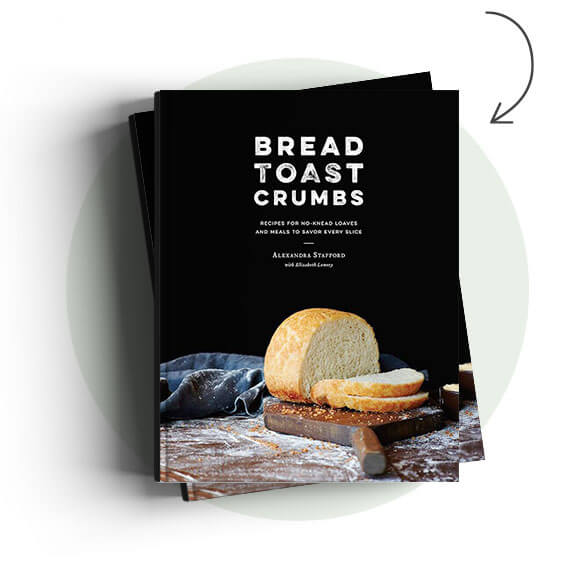

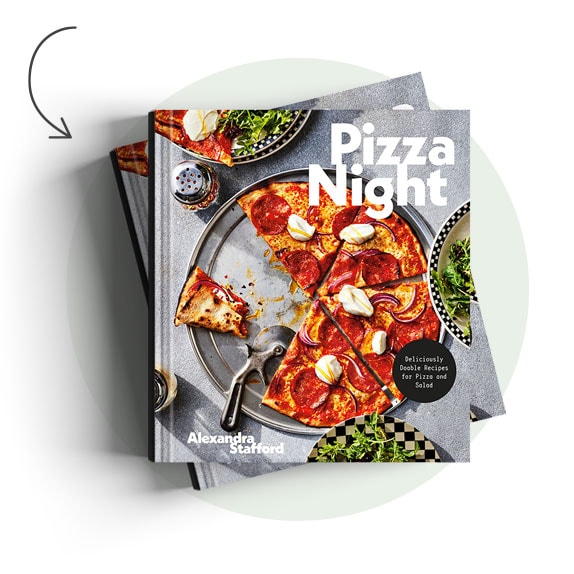

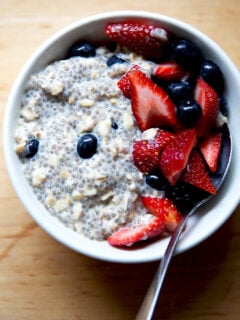
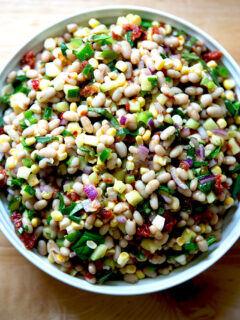
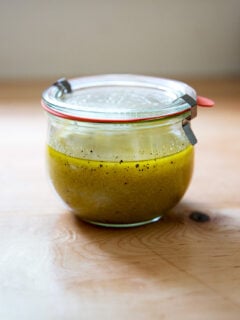
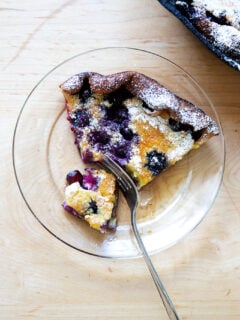
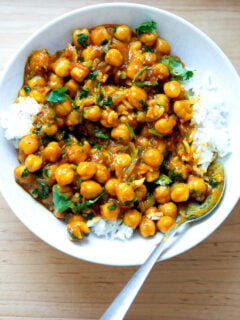

82 Comments on “After A Year of Answering Bread Questions, My Best Advice for Bread Bakers”
Your no-knead focaccia is simply the easiest and best bread ever. It takes 5 minutes to put together as I tidy the kitchen before bed, and VOILA! Fabulous lunch the next day. Thank you from the bottom of all our hearts.
So nice to hear this, Susan 🙂 🙂 🙂 So glad you like that one. Thanks so much for writing!
I have been baking bread with you for years, and I thank you for the confidence I have developed thru your guidance and recipes. The biggest thing I learned this year is that sourdough is robust – it comes out great even if you have to put it on hold in the middle of something. Can’t stretch and fold every half hour, every 15 minutes works. If bulk ferment isn’t finished and you want to go to bed, put it in the fridge and take it out the next day to finish on the counter. Doesn’t have to be perfect. Don’t worry about float test, either.
So true, Lisa! I love this. Sourdough is way more forgiving and flexible than many of us think, and there are tricks for making it work with our schedules. Thanks for writing!
Ali….your video is OutStanding! I saw several little tweaks for my next bake. Before I even got to the video I was nodding my head saying yes, been there, done that or gotta try that. Your essay gave me support and confidence in my approach. Thanks, again. Of course now I have to visit resale to see if I can find a batard “basket”😎😷
Thanks Wild Bill! I think you will be happy with your batard basket investment 🙂 🙂 🙂 An alternative is to use a small loaf pan (like 8×4-inches), but a batard is better. Hope you find success with the technique!
I recently read a nice trick for measuring the rise if you don’t have a straight-sided container.
Break off a piece of your dough and put it into a small straight-sided or marked container, like a measuring cup. Set it right next to the bowl (or whatever) containing your bulk dough. When the small dough has risen 2x, so has the large dough.
Steve, I saw this trick on a youtube video very recently as well! I thought it was genius!! Thank you so much for bringing it up bc it was something I’ve been meaning to share.
Your site is my go-to! Simple and straightforward! I have been baking bread for years, but was new to sourdough…..after watching videos (some were an hour long!) I still felt intimidated and then I found you! Game changer! At this point I’ve baked every variation of sourdough from breads to sweets and savories. What I’ve learned is that sourdough is very versatile and not nearly as daunting as many bakers demonstrate. Thanks Ali!
So nice to hear this, Bridget … I have been down the hours-long sourdough-videos rabbit hole as well 🙂 🙂 🙂 I have yet to dip my toe into sweet sourdough breads, but I’m going to this week with a sourdough brioche recipe. Thanks for writing!
Thank you for being an instrumental piece in making bread baking so accessible to me and so many others! I have been baking bread for the last year and it truly is much simpler than I ever thought it would be. As someone who is not a cook or a baker by nature, I have adapted to making bread like I never thought possible. Several of your recipes are incredibly easy and I say this as someone who had never baked much more than a box of store bought brownies. Focaccia and the famous Peasant Bread are by far the easiest for beginners and the taste (and smell while baking) are what brings people to the table. I have become an obsessive convert and if I can do it, anyone can. Experiment and have fun: I love adding about 15% dark rye flour to my sourdough sandwich bread. Get yourself a scale, a straight sided vessel and get to baking!
So nice to hear all of this, Brian! Thank you for encouraging words to others as well. I love the addition of rye in my breads as well. It’s always amazing what just a teensy bit will do. Thanks for writing and sharing all of this!
I’ve been wanting to add rye flour to the peasant loaf bread recipe but not sure about the proportions of bread flour (I have ultra unifine and unifine bread flour) to rye and how much more or less water needs to be added. I have made your challah bread now for the past month and it’s been a big hit!
Hi! Try it with 1 cup of rye flour and 3 cups of bread flour and see how it turns out. Rye makes for a denser loaf, which some people love and some people don’t. If you don’t like a dense loaf, try using 1/2 cup rye and 3 1/2 cups bread flour.
I ate very little bread before ‘meeting’ you – since then, and since COVID, I’ve made either your Mum’s peasant bread or the overnight foccacia (from your cooking class) every week for a year! I count down the minutes until I can cut into each loaf once they come out of the oven! My neighbours and friends have also joined your fan club as I’ve either dropped off ‘hello friend’ loafs or shared the recipes. My epic fail though, has been sourdough. I tried making the starter myself – I’m a little stubborn, so accepting defeat wasn’t easy, but after wasting way too much hard-to-find flour I figured I’d look elsewhere. I then traded masks I’d made with a successful sourdough baker in town …maybe I received her one and only failed starter, but after a couple tries to revive it, it became pancakes and I decided it was just something I needed to go to the bakery for!
Thank you for making this year so delicious!
Oh Helen, it’s so nice to hear this! But such a bummer about the sourdough. When you are ready to give another go, I will happily send you some of my starter 🙂 Let me know. But in the meantime, there’s so much good yeast-leavened bread to enjoy. Thanks for writing!
A wretched year indeed but your bread recipes were a constant companion. Your tips are bang on. If I were to add an eleventh (11th) tip, it would be don’t be afraid to add stuff to the dough, ie herbs, minced veggies chunks of butter :). I never. Add it back to sourdough but it didn’t seem to matter, so many good choices to make. Now if only I could find some rye flour!
No way I can pick a favorite, I want it all.
Cheers
Frank, thank you 🙂 🙂 🙂 Your 11th tip is so good — people ask me all the time how they can incorporate other ingredients/flavors and at what stage, and I think it’s all about, as you say, not being afraid to experiment and that precise quantities really don’t matter. Why is rye flour so hard to find?
Love seeing all of your beautiful loaves and other creations on IG. Thanks for writing!
Hi Ali,
I agree with other commenters on my appreciation for all that you share. It is always a treat when I see an email from you with new things to explore.
I think the big “aha” for me this year in bread baking (mostly sourdough) has been to not be too rigid. Recipes or bread formulas provide a guide but you must always pay attention to what the dough is telling you visually and by feel.
All the best to you!!!
So true, Bruce! I love this: “you must always pay attention to what the dough is telling you visually and by feel.” It’s so true. More and more I try to encourage people to rely on visual cues, not the timeline … that should have made it into the post above. Alas. Thanks for writing and for your kind words!
This is a shout-out to your recipes for naan and whole wheat Irish soda bread! Easy! And delicious!
Yay 🎉🎉🎉🎉🎉 So nice to hear this, Patty. Thanks so much for writing 🙂
Your bagels are the best- easy and delicious. I have also made your peasant bread, but it goes in a day! So good.
So nice to hear this, Sara 🙂 🙂 🙂 Thanks for writing!
Hi
Could you tell me how many grams are in a cup of each of the flours bread flour, whole wheat flour and rye flour as i would like to try weighing on a scale,
You might try this Cups to Grams Converter
https://www.thecalculatorsite.com/cooking/cups-grams.php
Hi Corinne! Which recipes are you referring to? The sourdough recipes I have on this site are all in grams. If you are referring to the two loaves in the video, here are the two recipes:
Simple Sourdough Bread, Step by Step
Easy Sourdough Bread (Whole Wheat-ish)
Ali- I have loved your book, your videos and all your recipes! Your cinnamon bread recipe is required of me when I visit my grandchildren! Unfortunately , I have been needing to switch to a gluten free diet. I have made the peasant bread gluten free but would LOVE any more suggestions or gluten free adaptations for your bread recipes!
Thank you, Jenifer! So nice to hear all of this. My kids love the cinnamon-swirld bread as well. I will try to keep an ear and eye out for more gluten-free suggestions. At the moment, my only tip is to use Cup4Cup or KAF’s gluten-free flour mix, both of which time and again deliver great results. Thanks for writing!
Your dad is spot on Ali!
“aha” moment #1. Yeast is not required to make bread i.e. Irish soda bread
“aha” moment #2 Evaporated milk diluted 1 to 1 makes milk
Funny how you run across things like this when your pressed for solutions.
PS I’m not giving up on hugs or hand shakes. Happy St Patrick’s Day!
Lisa, I love you 💕💕💕💕 Thank you for all of this. Love your evaporated milk tip. I used powdered buttermilk once not too long ago, and it kind of blew my mind that I had never done it before. So easy and convenient. Happy St. Patrick’s Day to you!!
Hi,
I use your Mom’s peasant recipe (I use whole wheat, rye flour, some bread flour). The dough stays in the fridge and the next day I bake it on a parchment paper in a cast iron vessel. 30 minutes with lid on and 20 minutes with lid off. I use different flour combinations (millet flour, atta, and Indian finely milled wheat flour….) but never change the weight of the flour or baking time.
I also make now your Holly’s Challah. I am Austrian and we have a version called Zopfbrot.
I make it with whole wheat flour and Austrians would not like the whole wheat flour!
Your focaccia comes out perfect even with whole wheat flour.
The sourdough bread I made only once, strictly following your recipe, however I don’t seem to able to keep up with feeding the dough…
Many thank for all the lovely recipes.
Adriana, thanks so much for taking the time to share all of these notes/details. Love your cast iron Dutch Oven method, and I love all of the various flours you are using. So great to hear about the challah and focaccia. I totally hear you on the starter. There are weeks where feeding a starter feels effortless for me, and there are weeks when it feels like a total chore (like this past one, incidentally) and I just can’t get myself to do it. Thank you for your kind words 💕
I’ve been baking bread for years, but your mom’s peasant bread recipe and SAF Instant yeast were my ah-ha moments. The bread is so good and so easy, and it translates to so many other things, like skillet pizza and Naan. Friends, if you have not gotten Alexandra’s cookbook, “Bread, Toast, Crumbs”, don’t wait any longer! It is the best cookbook I’ve purchased in years, money well spent! Thank you so much to you (and your mom) for sharing the recipes.
Awww Becky, thank you 🙂 🙂 🙂 This means the world. Truly. SAF was such a game-changer for me as well. So nice to hear all of this.
Two and a half years ago I bought your book and never looked back. So glad I felt that I was a comfortable bread baker (also started doing sourdough a few months before the world shut down!) before everything changed. I know do your whole wheat-ish sourdough once a week and other recipes from your book often as well. Thanks for always being a great source of knowledge, inspiration and confidence!
Oh Ruth, thank you! So nice to hear all of this 🙂 And great to hear about the whole wheat-ish sourdough, too… that’s the one I make most often as well. Thanks so much for writing!
I love the sound of you cutting the crust – so crisp! My last batch had a chewy crust but it wasn’t crisp. What brand is your cast iron vessel in the video? Do you prefer that to the Lodge one? Thanks for the help!
Hi Ashley! The brand is Challenger. I love it for batards because of its shape, and I love its design as well: the handles on top make for a very nice user experience 🙂 So yes, I do prefer it to the Lodge, though it is much more expensive, and I think the Lodge works as effectively in terms of how it bakes a loaf of bread. Hope that helps.
Hi Alexandra,
I’ve been baking bread for 40 years (gulp!) and had only tried making sourdough once or twice and with little success. I resisted the pandemic sourdough craze until last month when I bought some starter from King Arthur Flour. I have made your Simple Sourdough bread four times now and it’s fantastic! It’s so easy to make- as long as you plan ahead- and makes the best toast. I’ve been making KAF’s crackers and scallion pancakes with my discard so no waste either. Thank you for the recipe instructions and photos which have made this so easy and fun. Best wishes! Alexandra
So nice to hear this, Alexandra! Thanks so much for writing. And thanks for sharing those recipe recs for sourdough discard. Love the idea of making scallion pancakes with discard!
I first found you through a link to your Mom’s peasant bread recipe from another cooking blog, which became my go to years ago, and then rediscovered your blog last spring when my son and I were struggling were our sourdough starter.
Your advice was perfect, and we’ve never looked back! Your sourdough sandwich brand, pita recipe, skillet pizza, and tomato butter are in constant rotation at my house, and various other recipes make frequent appearances.
Thank you so much for making this past year a little better!
Oh my goodness, it’s so nice to hear all of this 🙂 🙂 🙂 So great to hear about the recipes in the regular rotation, and I’m so glad the advice on the sourdough starter was helpful. Thanks so much for writing, and thank you for the kind words!
Not on bread Ali, but I am really struggling with making pie crust for pot pies, gallettes, and pasties. Simply a train wreck here near Detroit… Help!!!
Oh Julia! This is my go-to pie crust recipe: Foolproof Pie Dough Recipe {Video} Let me know if you have questions if you give it a go.
Ali, when shaping your bread Batard rather than round what kind of pan do I choose, most of mine are round.
Love your Pheasant Bread actually all your recipes.
Thank you so much.
Thank you, Marion 🙂 🙂 🙂 Depending on how big your round pans are, you may be able to use them. If you shape this loaf, which is a little bit smaller than the one I linked to (it has 400 g flour as opposed to 500 g) into a batard, it might fit into one of your round pots. I have one of these Challenger bread pans (which are pricey but very nice). This one looks nice one, too.
I make a sandwich loaf of your peasant bread (with less salt and less sugar) several times a week–and I love your brioche burger buns too. But for me, the very idea of adjusting dough (or water really..lately I need to add a couple of extra tablespoons to hydrate my flour just right) to your reagents and environment means that messing with a scale is needless affectation—all those precise measurements are going to be adjusted on the fly to cope with the humidity of each batch of flour, etc, and ratios by volume work just fine. Bread making is as much art as science, and all bread bakers benefit from keeping that in mind–it’s about joy, not rules!
I also adjust the amount of instant yeast to my needs rather than try to control its doubling time with temperature–which I find less reproducible without an incubator. Need bread faster? Add 50% more yeast, need bread to rise all day to bake at night–reduce the yeast by half or even more (who has space in the fridge for dough? Not me.). Enriched dough? Needs more yeast as it yeast growth will be slowed. None of this is hard. But keeping your yeast in an airtight container in the freezer will help as it will behave more consistently. Sourdough however plays by its own rules…
Great tip re yeast. It’s so liberating realizing you can adjust the amount of yeast and make it work better for your timeline.
Obviously, I take a different stance on the importance of a scale, but I’m happy to hear you have had success using volume measurements. My sister, who has heard my mother and I advocate for a scale and encourage her to use one time and time again, refuses to use one and she makes the peasant bread all the time with her measuring cups : ) Thanks for writing!
Hi Ali!
I just got back to baking sourdough after a few month hiatus while I’ve been making lots of your mom’s peasant bread and it’s many variations (the buttermilk pull apart rolls are our favorite!). I’m still having issues with the crumb being very tight and interested in trying to shape as a batard. Wondering if you are using an 8″ banneton here, or if you would suggest something larger?
Thanks as always! I love your site and have been sending all my friends here, not just for the bread but for all your delicious recipes.
Christina
Hi Christina! So nice to hear all of this 🙂 Thank you. I am using an 8.5-inch oval banneton, but I think an 8-inch would work just as well. I ordered mine online, but it’s currently unavailable, otherwise I would have included the link. If I find a source, I’ll update the post. Thanks again for your note!
Hi – I’ve probably made at least 50 loaves of your whole wheatish sourdough bread across the past year and they all were great. I just tried the batard shaping trick and the loaf came out so much bigger, amazing!
Thank you!
What I have learned is that the more whole wheat I use, the easier to handle the dough, that a serrated tomato knife works well for scoring, that if I wet my hands when working with the dough, I don’t need a scraper, and the dough doesn’t stick.
The sourdough recipe doesn’t seem to have a problem with over-rising for me – I let the dough bulk rise overnight and shape it in the morning. A couple of long bannetons really makes things easy.
So nice to hear all of this, Andrew! Thanks so much for writing, and thanks so much for sharing everything you learned — so helpful for others. I love that using more whole wheat flour actually makes the dough easier to handle, and I’m so happy to hear you don’t have trouble with your dough over-rising. I also am able to let my dough double (sometimes triple) in volume, and it won’t over ferment. Thanks for sharing your wet hands trick too — so counter-intuitive but so effective.
Hello Alexandra! I have a question – why You reccomend cold proof for at least 24 hours before baking? What is the temperature of your fridge? I would be worry to not overferment the dough. Thanks in advance for your answer.
Hi! In my experience, 24 hours in the fridge promotes optimal gas development — as the dough ferments, more and more gas bubbles form, and then those gas bubbles hit the oven, they expand and make a really nice oven spring. My fridge is 40ºF.
Thanks for your anwer Alexandra!
I will definitely have to try this 24 hours proof! Now I’m working on your sourdough pizza recipe. I’ve found so many interesting informations on your site, I’m studying it all the time:))!
This week we have visited our family. The first visit since Thanksgiving 2019 is absolutely a blessing. My 14 year old granddaughter and I have baked cinnamon rolls, focaccia and today hot cross buns for tomorrow morning. Your recipes are easy for young ones. We have weighed our flour, let our bread rise in the 1 minute heated oven and use all your hints. THANK YOU
Do you have a recipe for Ukrainian Easter bread? I would greatly appreciate it. I recommend your recipes to all who will listen to me 😂
So nice to hear this, Sandra! Wonderful news that you got to visit your family, too. Thank you for your kind words 🙂
Regarding, Ukrainian Easter bread, I don’t have a recipe, but I wonder if this challah bread recipe could be adapted? If I experiment with it, I will report back 🙂
Love this post. I, too, have been baking bread for several decades. In the middle of “everyone baking bread” during the pandemic I was called an “overachiever” when I delivered a few fresh goods to a friend. Didn’t she remember all the holidays past that I’ve been happily sharing these goods? I didn’t discover your lovely site until just before the pandemic and have thoroughly enjoyed your insights and recipes. Such good advice in this post for everyone who wants delicious bread. Thanks for a wonderful site.
😂😂😂😂😂 I love this, Victoria! Too funny. Thanks so much for writing, and thank you for the kind words!
Hi Alexendra – I can’t thank you enough for all your easy bread recipes. I got across your Peasant bread recipe as I was browsing for simple bread recipes about 7-8 years ago. I can’t tell you how easy it was and had a success every single time or should say turns out better than before each time. In the beginning it was following through your notes/steps and now I mix the ingredients in a jiffy and in few hours fresh bread is served at the table with Pasta or veggies chili or lentils. After Peasant bread I started trying my hands on several other bread recipes such as (Focaccia, Brioche, Sourdough bread (both loaf and in the ducth oven), Cinnemon bun, Tortillas, Pita bread, Naan..)
I learned following lessons:
– Focaccia can be made same day too and doesn’t need to wait for overnight. It turns out great regardless.
– I learned that I must put plastic wrap on the dough if putting in refrigerator as thin dry layer forms on the top of the surface. I haven’t really come across airtight container which can avoid the dry crust on dough on top.
– I learned proofing time is important (as you too suggested in your tips). My sourdough was overproved the first time but after reading your tips I made sure not to overproof (just double) and it worked like a charm
– I learned it’s better to have the first rise in the fridge than keeping it for the second rise in the refrigerator (I must be doing something wrong but my experience so far)
– Also learned, Focaccia has the same measurements as peasant just (Add olive oil, a lot of 😊)
– Also learned Cinnamon Buns are very similar to brioche.
Last but not least, I have shared and recommended your recipes to so many friends and family and they all got hooked and now are baking bread at home with a lot of excitement and enthusiasm.
Thank you again for sharing your wonderful recipes with us,
Hi, I have always loved makning your bread. My husband is in love with your peasant bread. We recently just moved to high altitude (8600 ft). Do you have advice on your recipes for high altitude? I’ve been scared to bake since I got here.
Hi Misty! I have a few suggestions, but someone messaged me recently saying that she has success making the peasant bread at 9200 ft without making any adjustments, so I would make it as directed once (preferably using a scale).
If you don’t have success, try these things:
• If the dough feels dry after mixing (reference the video), add more water (as much as 32 grams or a quarter cup). It might not feel dry bc this is such a wet dough, but keep it in mind.
• Try decreasing the yeast to 1.5 teaspoons.
• Let the dough rise twice before transferring it to its bowls for a final rise.